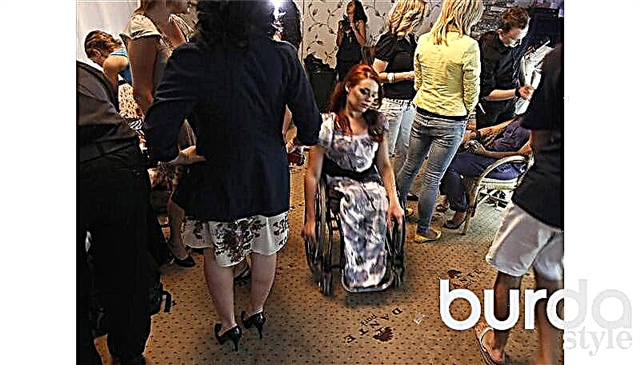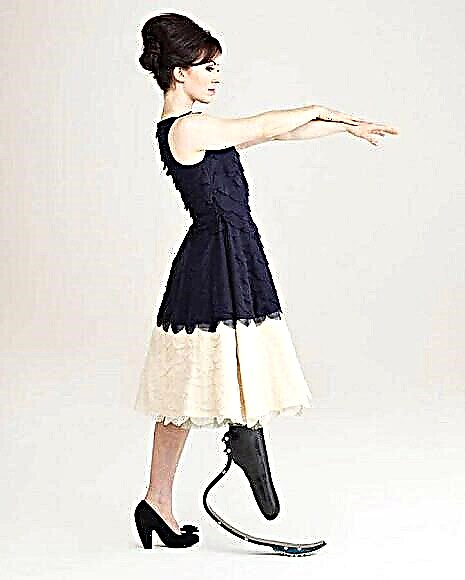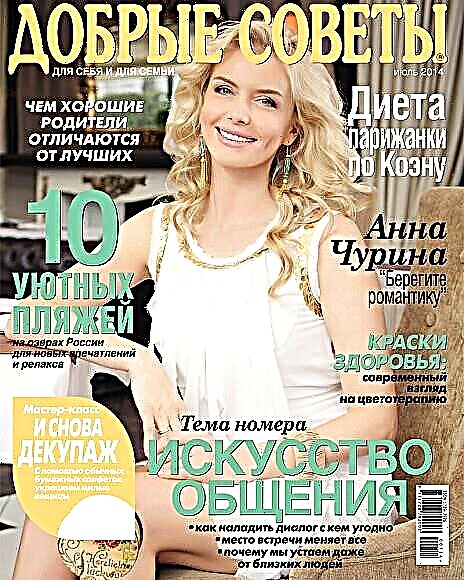Share
Pin
Tweet
Send
Share
Send
We admit honestly: most of us bypasses people with physical disabilities, or rather, people with disabilities.
When fashion collections for people with physical disabilities began to appear on catwalks and in advertising campaigns - it happened just recently, in 1999 - disputes arose immediately that still remain: they say, is it not better for us to build ramps, the manufacture of wheelchairs, comfortable prostheses, to provide disabled people with opportunities for full-fledged training and to provide them with jobs ...
And when my friend’s daughter got into a car accident and she needs a cosmetic prosthesis after rehabilitation, they searched in vain for him in our country: I had to go to Germany for him, and before that year to collect the necessary amount, because a cosmetic prosthesis is unnecessary for our ships a toy ... Thank God, this story ended relatively well: the girl succeeds in masking a small flaw in her appearance, and now she loves to go shopping and buy beautiful clothes, but the psychological trauma still remains and she still feels “different”.

But if you think about what kind of "others" they are, and even more so "strangers": they live next to us, they have the same desires, the same aspirations, many of them have extraordinary abilities. I will not say anything about their willpower, patience, determination.
How many of us have watched the Paralympics? How many admired and admired its participants and participants? How many people have heard about the fashion show Bezgraniz Couture International Fashion & Accessoire Award (international competition of fashion design for people with body shapes)?

Has anyone heard of Amy Mullins? This beautiful American with legs amputated in childhood is a record holder in running and long jump (1996 Paralympics). After this victory, she was included in the list of 50 most beautiful people in the world according to People magazine. Three years later, photographer Nick Knight, commissioned by designer Alexander McQueen, made a photo shoot with Amy as a broken doll. Then Amy Mullins took part in fashion more than once, and for one of them McQueen made special prostheses for her in the form of wooden boots with heels (now Amy has a whole collection of special prostheses - a very expensive collection!).

Do you know what proesthetics is? This is a symbiosis of prosthetics and design, when prostheses sometimes turn into real works of art. Yes, in many countries of the world prostheses are considered as a fashion accessory that is not hidden from prying eyes. An elegant corset with perforation for the spine, a wing of feathers and flowers for an absent hand - the imagination of fashion artists sometimes seems, to put it mildly, excessive. But thanks to them, disability gradually loses the status of inferiority. And Amy Mullins is no longer the only model - Kelly Knox, for example, despite the absence of a forearm, became a sought-after model after she won the beauty contest Britain Missing Top Model.
You heard, by the way, that the promotions at the 2010 Paralympics in Vancouver were held under the slogan "Save your pity for your opponent!" And last year, two Paralympic champions demonstrated clothes in the Principles collection: Kelly Knox and sprinter and long jumpers Stephanie Reid.
But the dry numbers: around the world about 15% of people have some form of disability - temporary or permanent.

Designers who design clothing for people with physical disabilities are convinced that they need fashion too! Maybe a porcelain tire with floral decoration for a broken arm is an excess, but those who, for example, are confined to a wheelchair (no matter how long) must look good too, and it's hard to disagree.
Many are of the opinion that fashion shows should be collaborative. But - clothing for people with disabilities (physical features) is still primarily required to be practical and functional: it should facilitate a person’s self-care, or ease the work of those who serve him. Not only style is important here, but also special knowledge. Particular attention is paid to the individual cut, but it is equally important to consider other requirements. For example, for people with Down syndrome, clothes with light fasteners are made from fabrics that are pleasant to the touch. For people with cerebral palsy, clothing should first of all be comfortable at the time of putting on and taking off. For people with amputations, clothing should be easily removed and worn. For people in a wheelchair, the fabric should not be wound on wheels, and the cut should resemble a transformer that can be worn while sitting. Trousers for men in a wheelchair should be tailored so that they are comfortable to sit in - with tucks in the knee, with a higher waistline, with increased length. Jackets, on the contrary, should be shortened, and the sleeves should not restrict freedom of movement.
And at the same time, the efforts of designers are aimed at ensuring that outwardly all these outfits could not be distinguished from classic clothes. Of course, such things are not cheap - individual tailoring, that is, the lack of mass production, environmental materials, sometimes even space technology. But to be special is not an easy task at all ...

Photo: PR, imax / de. Models: Debenhams, AlexanderMcQueen, DamianSallivan, HarlyHaggen, Aimee Mullins, Kelly Knox, Stephanie Reid, Shannon Marie, Miguel Angelo, collections: Valentin Volkov, Masha Sharoeva, Yanina Urusova.
The material was prepared by Elena Karpova.
Share
Pin
Tweet
Send
Share
Send

















